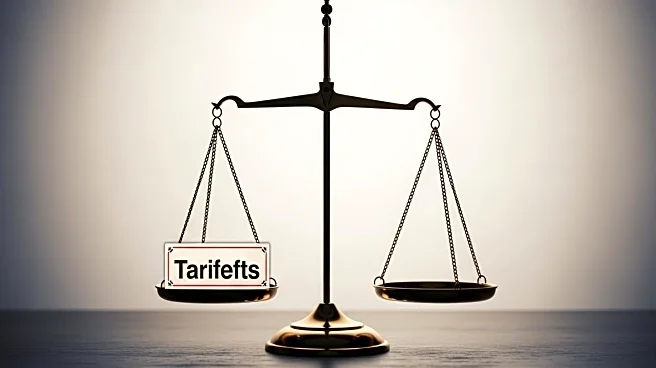What's Happening?
Small-cap stocks have experienced significant gains, with the Russell 2000 index closing at a record high, surpassing its previous peak set in 2021. This marks the index's longest weekly winning streak since 2020, as traders anticipated the Federal Reserve's decision to resume its rate-cutting cycle. The Fed recently lowered its overnight lending rate by a quarter-percentage point, a move that historically benefits smaller stocks. According to Canaccord Genuity, small-cap indices have returned an average of 35% over a 12-month period following such rate cuts after a prolonged pause. The iShares Russell 2000 ETF, which tracks the small-cap index, has reached a technical pattern target, suggesting potential further gains.
Why It's Important?
The Federal Reserve's decision to cut interest rates is significant for the U.S. economy, particularly for small-cap stocks, which are often more sensitive to changes in monetary policy. This development could lead to increased investment in smaller companies, potentially driving economic growth and innovation. Investors and businesses stand to benefit from the favorable conditions created by lower borrowing costs, which can stimulate expansion and hiring. However, the sustainability of these gains remains uncertain, as market dynamics and economic conditions continue to evolve.
What's Next?
The future trajectory of small-cap stocks will depend on several factors, including the Federal Reserve's ongoing monetary policy decisions and broader economic conditions. Investors will be closely monitoring whether the iShares Russell 2000 ETF can maintain its upward momentum and break through resistance levels. Additionally, the potential for further rate cuts or changes in economic indicators could influence market sentiment and investment strategies. Stakeholders, including businesses and policymakers, will need to adapt to these developments to capitalize on opportunities and mitigate risks.
Beyond the Headlines
The implications of the Federal Reserve's rate cut extend beyond immediate market gains. It raises questions about the long-term impact on economic inequality, as smaller companies may benefit disproportionately compared to larger corporations. Additionally, the decision reflects broader economic challenges, such as inflation and growth concerns, that the Fed must navigate. The rate cut also highlights the delicate balance between stimulating economic activity and maintaining financial stability, a challenge that will continue to shape U.S. monetary policy.










